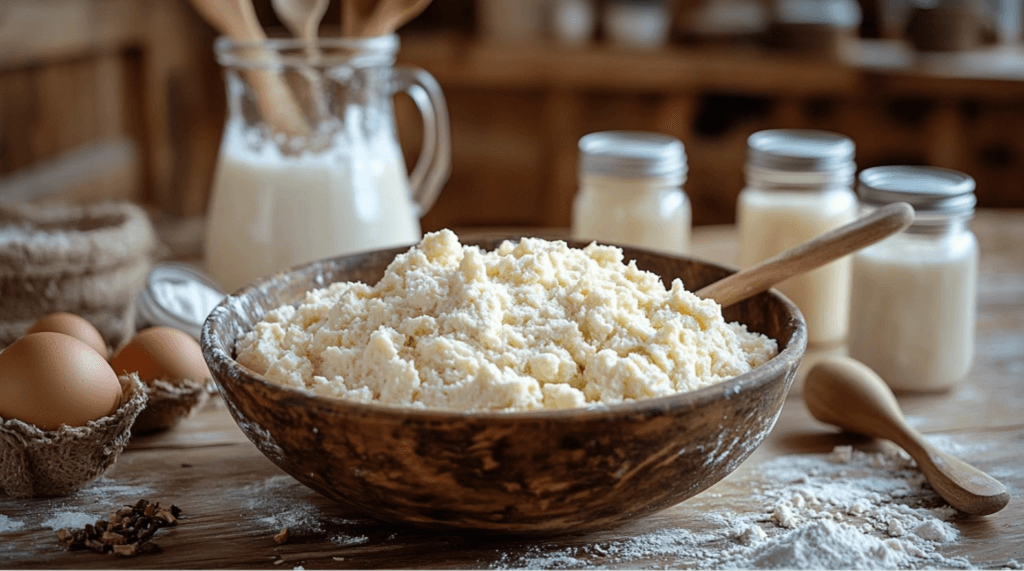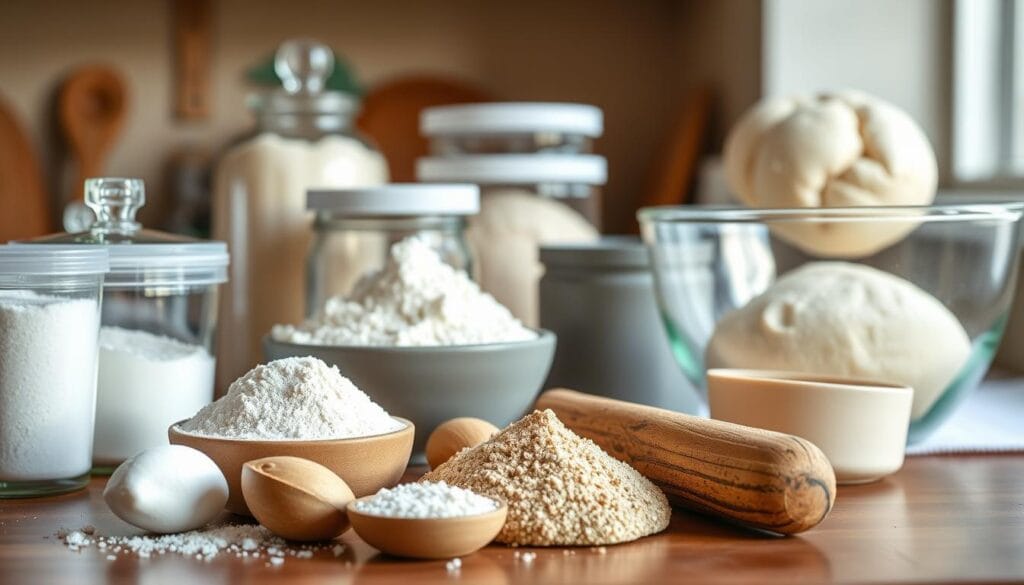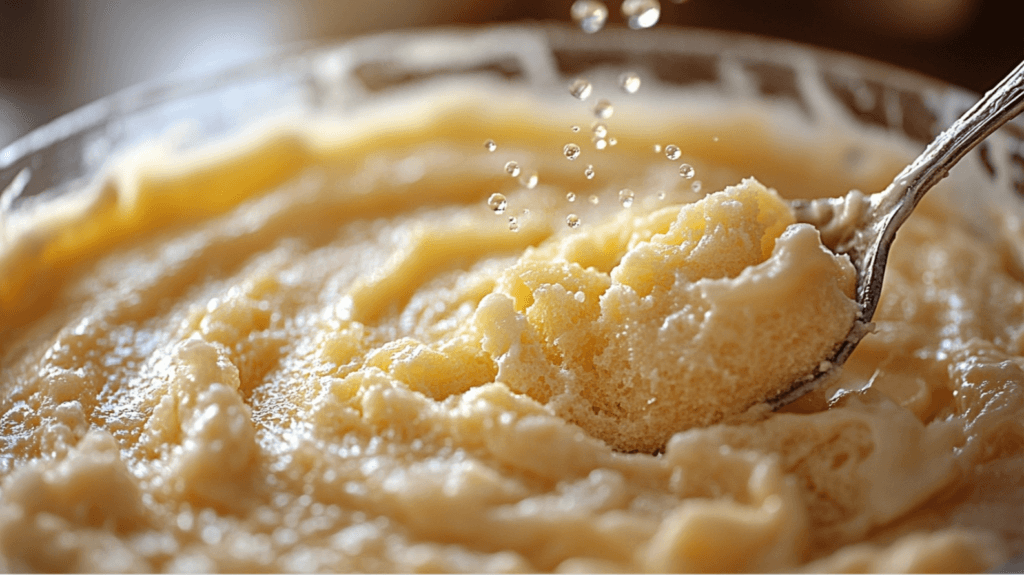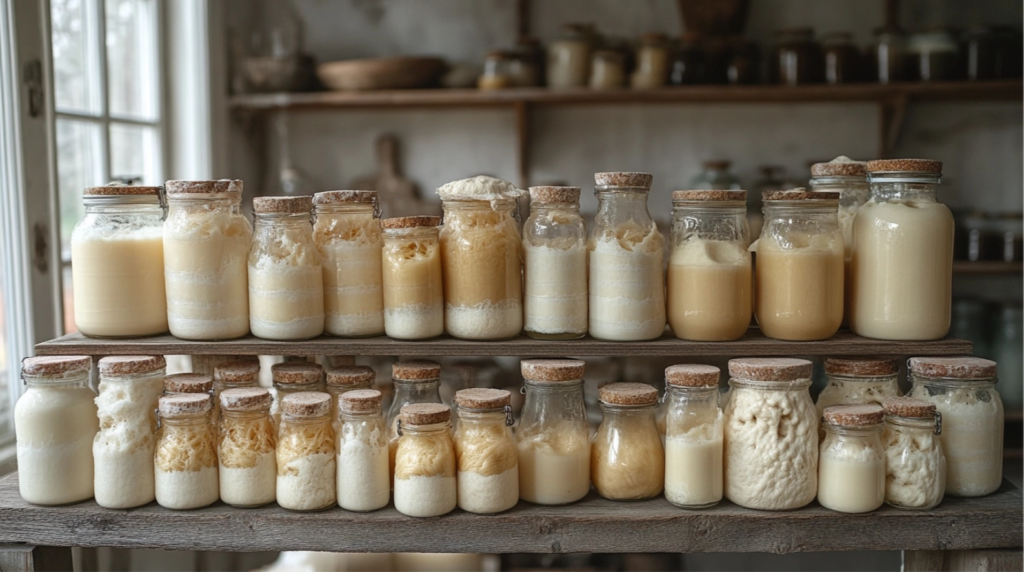Baking Amish Friendship Bread is very comforting. It’s like a labor of love. You nurture a starter, share it, and make a sweet loaf. But, there’s a big rule: never use metal for the starter.
This rule is based on science and the bread’s special nature. It’s all about how the starter ferments.
Main Highlights
- Amish Friendship Bread is a unique sourdough starter that is passed between friends and neighbors.
- The starter is used to make a sweet, cinnamon-infused bread and over 250 other recipes.
- Metal containers can negatively impact the delicate fermentation process of the starter.
- Using non-metal containers, such as glass or ceramic, is recommended for optimal starter health and activity.
- Proper care and maintenance of the starter are essential for successful Amish Friendship Bread baking.
Understanding the Traditional Amish Bread Making Process
The Amish Friendship Bread is a big part of community values and cultural food practices. It has a 10-day cycle. This cycle makes a tasty heirloom recipe and shows the community’s bond.
Origins of Amish Friendship Bread
Amish Friendship Bread started as a way to share food and make friends. The starter culture is at the heart of this bread. It needs regular care, showing the community’s love for relationships.
The Significance of Starter Culture
The starter culture is crucial for Amish Friendship Bread. It needs to be kept at 70-80°F (21-27°C) to thrive. If you refrigerate it, feed it daily or every other day to keep it healthy.
Cultural Importance in Amish Communities
Making Amish Friendship Bread is about community, sharing, and hospitality. The 10-day cycle ends with four bags of starter. Each bag is shared with three friends, spreading the joy of this heirloom recipe.
| Key Aspects of Amish Friendship Bread | Details |
|---|---|
| Starter Culture | Requires regular feeding, best temperature range is 70-80°F (21-27°C) |
| Baking Process | 10-day cycle, bake at 325°F for 40-50 minutes, test with toothpick |
| Sharing and Community | Each batch creates 4 bags of starter to share with 3 friends each time |
The Amish Friendship Bread shows the Amish community values and cultural food practices. These traditions bring unity and shared experiences to these tight-knit communities.

The Science Behind Metal and Fermentation
Using metal containers for Amish Friendship Bread can be a problem. The starter’s acidic parts can react with metal. This can change the bread’s taste, texture, and quality.
The fermentation process is key for Amish Friendship Bread. It depends on good bacteria and yeasts. These need a certain pH to work well. Metal containers can mess with this balance, affecting the fermentation.
| Non-Reactive Baking Containers | Potential Issues with Metal Containers |
|---|---|
|
|
To keep your Amish Friendship Bread starter safe and working well, use non-reactive containers. Glass, ceramic, or food-grade plastic are good choices. They don’t mess with fermentation and keep the starter quality high.

Why Can’t You Use Metal for Amish Friendship Bread
When making Amish Friendship Bread, remember one key rule. Don’t use metal containers or utensils. The bread starter’s acidity can react with metal, causing problems.
Chemical Reactions with Metal Containers
The starter for Amish Friendship Bread is alive. It has yeast and bacteria. This mix is very acidic, with a pH between 3.5 and 4.5.
When this starter meets metal, a chemical reaction happens. Metal ions mix into the starter. This changes the starter’s pH, affecting its balance and fermentation.
This can mess up the bread’s flavor, texture, and quality. The starter’s health and the bread’s taste suffer.
Impact on Starter Quality
Adding metal ions to the starter harms it. The changed pH stops the yeast and bacteria from growing. This weakens the starter, making it less effective and less tangy.
Also, metal can bring bad flavors and smells. This ruins the bread’s true taste, making it less authentic.
Potential Health Concerns
Using metal with the starter can also be unhealthy. Some metals, like copper or aluminum, are toxic. Eating too much of these metals can harm you.
To keep your bread safe and good, avoid metal. Use it only for mixing and baking the final loaf.

Safe Container Options for Your Starter
Choosing the right container for your Amish Friendship Bread starter is key. Metal containers are a no-go because they can harm the starter’s quality. Go for bread proofing containers or non-reactive baking containers instead.
A 2-quart glass, plastic, or ceramic vessel is the best choice. Glass jars, like the 9-cup Bormioli Rocco Fido Square Jar, are great. They let your starter breathe and grow well.
- Glass containers are non-reactive and easy to clean, making them a popular choice for Amish Friendship Bread starters.
- Plastic containers, as long as they are food-grade and BPA-free, can also be used to store your starter.
- Ceramic containers are another excellent option, as they are durable and won’t interact with the acidity of the starter.
Make sure your chosen container has enough room for your starter to grow. This prevents spills With the right bread-proofing containers and care, your starter will make tasty bread.

Proper Storage Methods and Materials
Choosing the right container for your Amish friendship bread starter is key. It keeps your starter safe and fresh for a long time. The right storage prevents contamination and keeps the starter healthy.
Glass Container Benefits
Glass containers are the top choice for storing Amish friendship bread starters. They are easy to clean and won’t react with the starter. Glass also lets you see the starter, helping you spot any problems.
Plastic Container Options
Plastic containers can work too, but they must be BPA-free and food-grade. They should not have chemicals that could harm the starter. Choose airtight containers but let air in for the starter’s health.
Ceramic Storage Solutions
Ceramic containers keep the starter at the right temperature. They are also easy to clean and safe for food. But, make sure the ceramic is lead-free for your safety.
Every container should let air in, either with a loose lid or a latch that’s not tight. This helps the starter breathe and prevents moisture and mold.
Common Mistakes to Avoid When Making Amish Friendship Bread
Amish baking traditions have lasted for many years. The Amish Friendship Bread is a favorite among many. But, there are common mistakes that can mess up your baking. Knowing these mistakes can help you make a delicious Amish Friendship Bread.
Choosing the right container is key for a healthy starter. Don’t use metal containers because they can harm the starter. Instead, pick glass, food-grade plastic, or ceramic.
It’s also important not to seal the starter too tightly. You need to let air in. Tight seals can stop the starter from working right.
- Not stirring the starter daily is another mistake. Stirring helps the yeast spread evenly. This prevents bad skin from forming.
- Getting the feeding ratios wrong can hurt the starter too. The right mix of flour, sugar, and liquid is important for a good starter.
By avoiding these mistakes and following good practices, you can make the best Amish Friendship Bread. Enjoy the homemade taste that this recipe offers.
Best Practices for Starter Maintenance
Keeping your Amish Friendship Bread starter alive is key. A regular feeding schedule and the right temperature are essential. This way, your fermented bread starters will stay healthy and active. They’ll be ready to make the delicious loaves that unite communities.
Feeding Schedule Guidelines
The Amish Friendship Bread starter needs to be fed every 10 days. On days 1, 5, and 10, mix 1 cup each of flour, sugar, and milk. Stir the starter every day to mix the ingredients well and help it ferment evenly.
Temperature Control Tips
Keeping the right temperature is vital for your friendship bread starter care. Aim for 70-80°F (21-27°C). If it’s too cold, find a warmer spot for your starter. Store it in the fridge and feed it once a week to slow down fermentation.
By sticking to these tips for fermented bread starters, your Amish Friendship Bread starter will stay lively. This will help keep the traditions and community bonds that make this bread so loved.
Alternative Tools and Utensils for Mixing
When working with your Amish Friendship Bread starter, it’s key to avoid metal. The acidic process can harm the starter and the bread. Use non-reactive containers and traditional methods for the best results.
For stirring, use wooden spoons, silicone spatulas, or plastic utensils. These won’t mess with your starter’s balance. When sharing a starter, use plastic or glass measuring cups instead of metal.
Kneading the dough is important. Do it on a wooden board or silicone mat, not metal. This keeps the starter healthy and prevents bad reactions.
Using the right tools ensures your starter stays healthy. This leads to tasty homemade bread every time.
Remember, to keep your Amish Friendship Bread starter healthy, avoid metal. Stick to wooden, silicone, and glass for the best results and a true baking experience.
Signs of Healthy vs. Contaminated Starter
Keeping an eye on your Amish friendship bread starter is key. A healthy starter shows clear signs. It looks and smells great.
Visual Indicators
A good Amish friendship bread starter is bubbly after feeding. It should be creamy off-white, without mold. Pink or green means it’s contaminated and must be thrown away for safety.
Aroma Guidelines
A healthy Amish friendship bread starter smells yeasty and slightly sour. This means it’s fermenting well. But, a strong acetone smell means it’s not good and needs to be replaced.
Watching your Amish friendship bread starter closely is important. It keeps your baked goods safe and tasty. Knowing when it’s healthy or not helps you enjoy your Amish friendship bread without worry.
Conclusion
Amish Friendship Bread is a special tradition. It needs careful handling and maintenance. By avoiding metal and using the right storage, you can enjoy this bread and share it with others.
This tradition shows the Amish values of simplicity and generosity. The starter culture is key, showing the Amish love for the community. By following the 10-day cycle and using the right containers, your bread will be top quality.
Starting your Amish Friendship Bread journey is exciting. It’s a chance to connect with a rich history and share delicious bread. It’s more than just food; it’s about community and joy.
FAQ
Why can’t you use metal for Amish Friendship Bread?
Metal can react with the starter’s acids. This can change the starter’s taste, texture, and quality.
What are the recommended containers for Amish Friendship Bread starter?
Use glass, plastic, or ceramic containers. A 2-quart container is best for the starter. For long-term storage, a 9-cup Bormioli Rocco Fido Square Jar is recommended.
How can metal utensils or containers affect the Amish Friendship Bread starter?
Metal can leach ions into the starter. This can change its pH and introduce harmful substances. It can also affect the starter’s quality and flavor.
What are the common mistakes to avoid when making Amish Friendship Bread?
Avoid using metal utensils or containers. Don’t seal the starter too tightly. Daily stirring and proper feeding ratios are key. Keep the ingredients balanced and avoid contamination.
How do you properly maintain the Amish Friendship Bread starter?
Feed the starter on days 1, 5, and 10 with 1 cup each of flour, sugar, and milk. Stir daily. Keep it at room temperature (around 70°F/21°C) for best fermentation. If it’s too cool, find a warmer spot. For long-term storage, refrigerate and feed weekly.
What are the signs of a healthy vs. contaminated Amish Friendship Bread starter?
A healthy starter is bubbly and creamy off-white. It smells yeasty and slightly sour. Contamination signs include mold, pink color, or a strong acetone smell. If it’s not active or smells bad, it may need to be thrown away.

